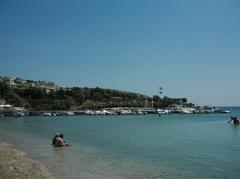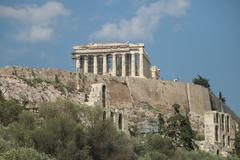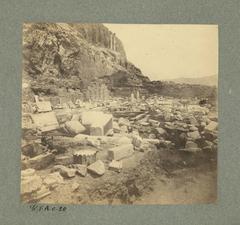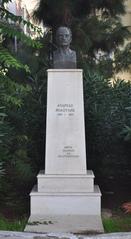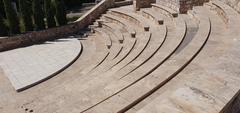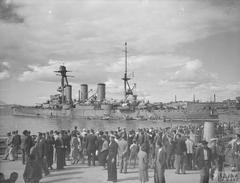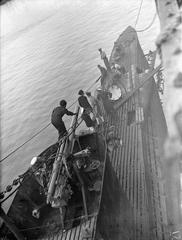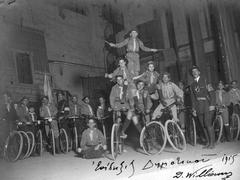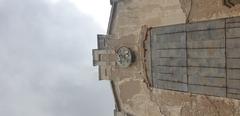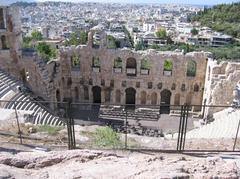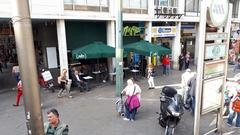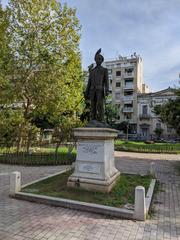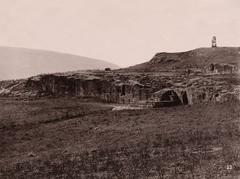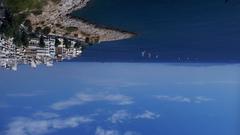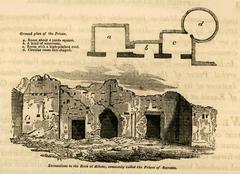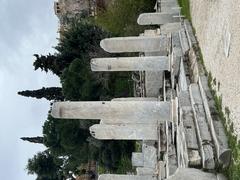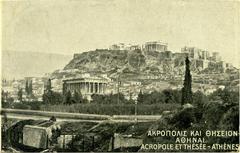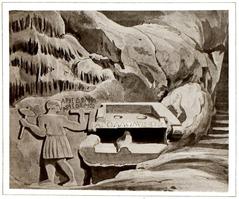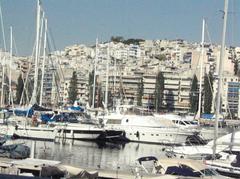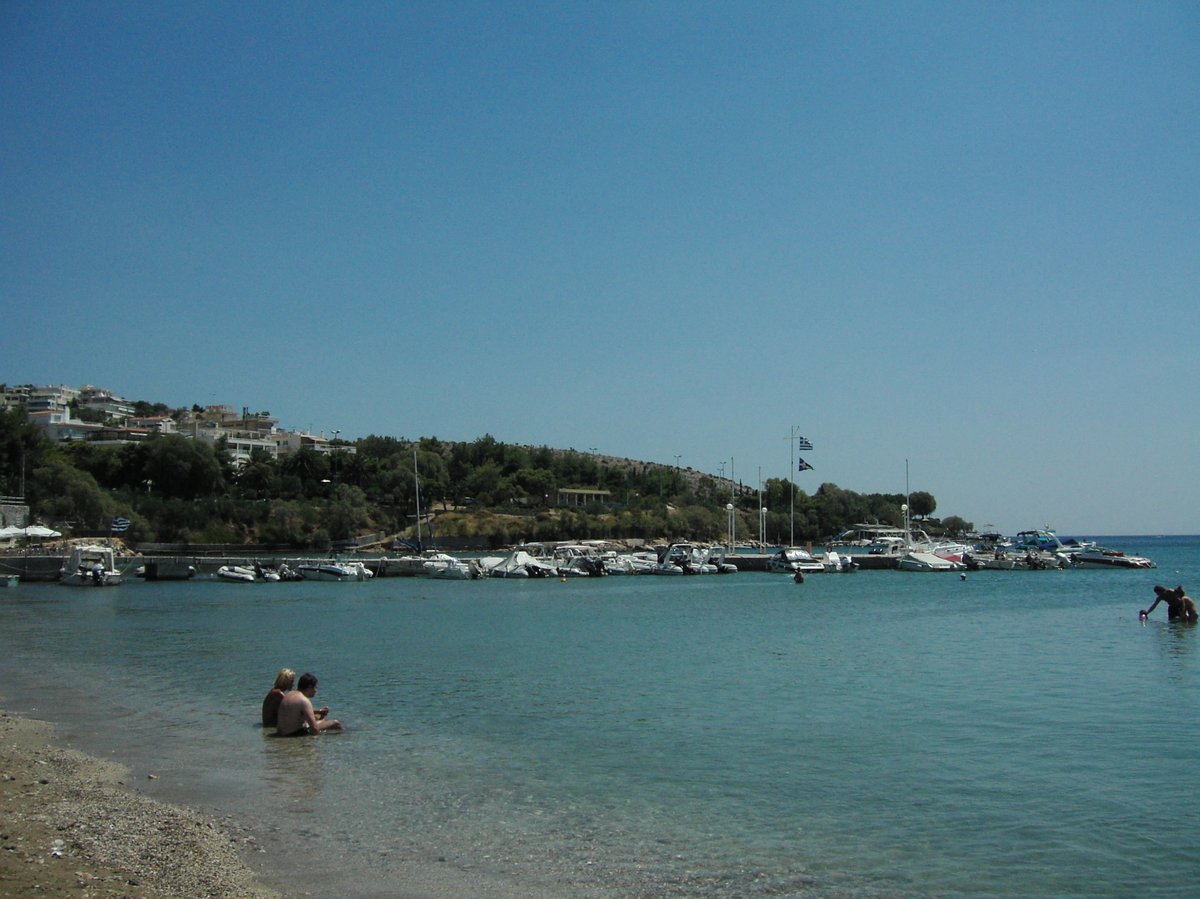
Port of Piraeus Visiting Hours, Tickets, and Travel Guide
Date: 14/06/2025
Introduction to the Port of Piraeus and Its Significance
Piraeus, Greece’s historic port city, stands as a dynamic gateway to the Aegean Sea and the Greek islands, fusing millennia of rich maritime history with its present-day role as a modern economic and tourism hub. Once an island, Piraeus became a peninsula due to natural sedimentation and, by the 5th century BCE, was transformed into Athens’ principal port under Themistocles. Its deep-water harbors and strategic location have made it one of Europe’s busiest ports, supporting both international trade and tourism (Exploring Greece; Britannica).
Today, Piraeus is crucial for Greece’s economy, ranking among the top five container ports in Europe and serving over 20 million passengers annually (PortEconomics; Safety4Sea). Major investments, especially after COSCO Shipping’s acquisition, have transformed the port into a state-of-the-art logistics and cruise hub (Ship Technology). Visitors can explore not just a bustling port but also a wealth of cultural and historical attractions. The city offers easy access to the Archaeological Museum of Piraeus, ancient fortifications, the vibrant Kastella neighborhood, and is a short ride from Athens’ iconic sites such as the Acropolis (ferryports.com; adventourbegins.com).
This detailed guide provides an overview of Piraeus’ evolution, economic importance, practical visitor information, and highlights nearby attractions, ensuring you make the most of your visit (GreekBoston; Greeka).
Table of Contents
- History of Piraeus and Its Role in Athens
- Visiting Piraeus Today: Practical Information
- The Port’s Economic and Strategic Significance
- Modernization and Infrastructure
- Passenger and Cruise Operations
- Sustainability and Future Developments
- Challenges and Controversies
- Travel Tips and FAQs
- Complete Guide: Visiting Piraeus Port and Nearby Highlights
- Useful Contacts and References
- Conclusion
History of Piraeus and Its Role in Athens
Origins and Early Settlement
Piraeus, whose name means “the place over the passage,” was originally an island, later joined to the mainland by sediment. Archaeological evidence dates early settlement to the 26th century BCE, but it flourished as Athens’ port in the 5th century BCE (Exploring Greece).
Classical Antiquity
Themistocles persuaded Athenians to use Piraeus for its superior harbors, constructing fortifications and the famous Long Walls to connect it with Athens. Piraeus became the heart of Athens’ naval power, playing a pivotal role in defending against Persian invasions (Britannica; GreekBoston).
Hellenistic, Roman, and Later Eras
Piraeus’ fortunes fluctuated—thriving in the Classical and Hellenistic eras, then declining after the Peloponnesian War and Roman conquest. The city was devastated by Sulla in 86 BCE. In Byzantine and Venetian times, it was known as Porto Leone, named after a marble lion now in Venice (GreekBoston).
19th Century Revival to Modern Growth
After Greece’s independence, Piraeus was revitalized as Athens’ main port, benefiting from the Athens-Piraeus railway and the opening of the Corinth Canal (Greeka). The city’s grid plan echoes ancient Hippodamus’ design.
WWII and Reconstruction
Piraeus suffered extensive damage during World War II but was rebuilt as an industrial and shipping center (Britannica), paving the way for today’s vibrant port.
Visiting Piraeus Today: Practical Information
Visiting Hours and Tickets
- Archaeological Museum of Piraeus: Open Tuesday–Sunday, 8:30 AM–3:00 PM; closed Mondays; tickets €4 (reduced €2); free on select holidays (Odysseus Culture).
- Hellenic Maritime Museum: Wednesday–Sunday, 9:00 AM–2:00 PM; tickets €5; partial wheelchair access (Hellenic Maritime Museum).
- Port area (promenades, markets): Open year-round, 24/7.
Getting There and Accessibility
- Metro: Line 1 (Green Line) connects central Athens to Piraeus station, a short walk from the port terminals.
- Tram: Offers scenic coastal access.
- Buses and Taxis: Available everywhere in Athens.
- Airport Express Bus (X96): Connects Athens International Airport with the port (60–90 minutes).
- Accessibility: Terminals and main museums offer wheelchair access and facilities for travelers with mobility needs. Assistance can be requested from ferry operators.
Key Attractions and Experiences
Archaeological and Maritime Heritage
- Archaeological Museum of Piraeus: Renowned for its bronze statues and ancient theater remains.
- Hellenic Maritime Museum: Exhibits ship models, naval artifacts, and Greek maritime history.
Historic Landmarks and Neighborhoods
- Ancient Walls and Gates: Explore remnants of the 5th-century BCE fortifications.
- Kastella Hill: Offers panoramic views and a picturesque neighborhood.
- Piraiki Seafront: Experience traditional Greek dining and local life.
Modern Attractions and Culture
- Marina Zeas (Pasalimani): Bustling with yachts, cafes, and nightlife.
- Municipal Theatre of Piraeus: Hosts performances in a neoclassical setting.
- Art Spaces and Festivals: Home to events like the Sea Days Festival and Taste Festival.
Religious and Memorial Sites
- Church of Saint Nicholas: Patron saint of sailors.
- Genocide Memorial: Honors Pontic Greek genocide victims.
Island Hopping and Day Trips
- Ferry Connections: Daily services to Aegina, Hydra, Cyclades, Crete, and more. Tickets available online or at port kiosks.
- Cruises: Four terminals serve Mediterranean itineraries.
Unique Museums and Venues
- Electric Railways Museum: Showcases vintage urban transport.
- Peace and Friendship Stadium: Hosts sports and concerts.
Culinary Experiences
- Seafood Dining: Enjoy fresh catches along Piraiki seafront and Marina Zeas.
Shopping and Local Life
- Markets and Boutiques: Discover local produce and souvenirs on Vasileos Georgiou Avenue and Tsamadou Street.
The Port’s Economic and Strategic Significance
Piraeus is Greece’s largest port and a major transshipment hub, connected to 69 global ports and serving as a key node in the Belt and Road Initiative (PortEconomics; Greek City Times). It supports over 330,000 jobs and contributes about 7.4% of Greece’s GDP (Tradlinx). The port’s connectivity and growing cruise sector make it a linchpin for both trade and tourism.
Modernization and Infrastructure
Since COSCO acquired a majority stake in the Piraeus Port Authority, significant investments have modernized terminals, expanded capacity, and improved passenger facilities (Ship Technology). The port now handles millions of containers, up to 600,000 vehicles annually, and is expanding to accommodate mega cruise ships (Ports Europe). Ongoing projects aim to further enhance operations and visitor experience (NeoCloud Marketing).
Passenger and Cruise Operations
Piraeus is Europe’s busiest passenger port, with over 18 million annual travelers and extensive ferry routes to the Greek islands (cruisemapper.com). Three main cruise terminals handle both homeporting and port-of-call traffic, and the port is being upgraded to serve more cruise tourists (ferryports.com; cruisemapper.com).
Sustainability and Future Developments
Piraeus is advancing sustainability with green technologies, energy efficiency, and digital innovation (Safety4Sea). As an “ECO PORTS” member, it invests in automation and clean energy to align with EU goals (Maritimes). Recent initiatives include port fee reductions and enhanced recycling programs.
Challenges and Controversies
COSCO’s investment has driven growth but also raised concerns about foreign control, regulatory oversight, and the pace of infrastructure upgrades (Greek City Times). The Greek government is pressing for improvements in passenger services to ensure benefits for the community (Future Warfare).
Travel Tips and FAQs
- Best Time to Visit: Spring (March–May) and early autumn (September–October) offer pleasant weather and fewer crowds.
- Tickets: Book ferry/cruise tickets online or at port counters in advance during peak season.
- Arrive Early: Allow extra time for boarding, especially in peak summer months.
- Transportation: Metro Line 1 is the fastest link to Athens center; taxis and Airport Express buses are also reliable.
- Accessibility: Most terminals and museums are accessible; assistance can be pre-arranged.
- Safety: Piraeus is generally safe; watch for petty theft in crowded areas.
FAQs
-
What are the Piraeus Port visiting hours?
The port operates 24/7, but ticket offices and terminals are open from 6:00 AM–10:00 PM. Check with your operator for specifics. -
How do I buy ferry tickets?
Online through ferry company websites, port ticket counters, or travel agencies. Early booking is recommended. -
Is Piraeus accessible for travelers with disabilities?
Yes, with ramps, elevators, accessible restrooms, and assistance upon request. -
What nearby attractions can I visit?
The Acropolis, Ancient Agora, Plaka, and the National Archaeological Museum are all within easy reach by metro or taxi.
Complete Guide: Visiting Piraeus Port and Nearby Highlights
Location and Layout
Piraeus Port is situated about 10 km southwest of Athens’ center, divided into commercial, ferry, cruise, and marina zones (adventourbegins.com; ferryports.com; greeking.me).
Terminals and Facilities
Three cruise terminals (A, B, C), ten ferry gates, and two cruise gates offer free WiFi, air-conditioned lounges, luggage storage, and courtesy shuttle buses (about2cruise.co.uk; ferryports.com). A new terminal at Pier 3 will increase cruise capacity to 1.7 million passengers per year (cruisemapper.com).
Getting Around
- Metro/Train: Direct to Athens center in 20–30 minutes.
- Airport Express X96: 60–90 minutes to Athens International Airport.
- Taxis/Private Transfers: Readily available.
- Shuttle Buses: Free inside the port; Fun Blue Train offers local sightseeing.
Parking
Multiple parking lots are available; booking ahead is recommended in summer (ferryports.com).
Local Amenities
Hotels, restaurants, shops, ATMs, and free WiFi are all within or near the port (adventourbegins.com; greeking.me).
Health and Safety
Healthcare is good, but travel insurance is advised. The city is generally safe, with standard urban precautions (hikersbay.com).
Useful Contacts and References
Conclusion
Piraeus is more than a gateway to the Greek islands—it’s a vibrant, historic city offering a seamless blend of ancient heritage and modern amenities. With efficient transport links, accessible facilities, and a wealth of attractions, Piraeus is an ideal starting point for exploring both Athens and the Aegean. For up-to-date information, download the Audiala app, follow our updates, and make the most of your visit to this iconic port.
